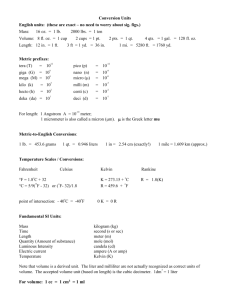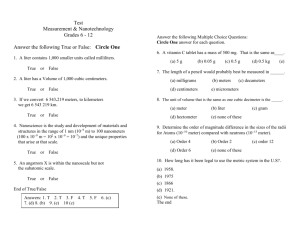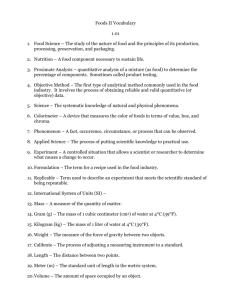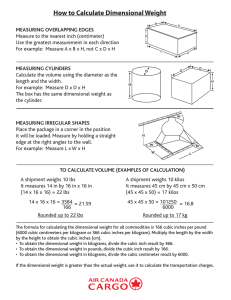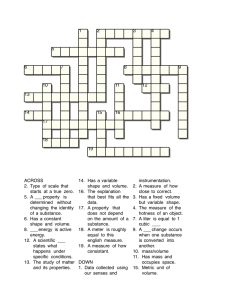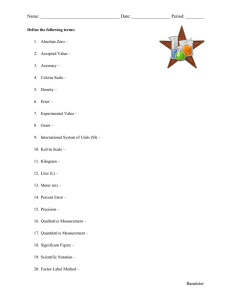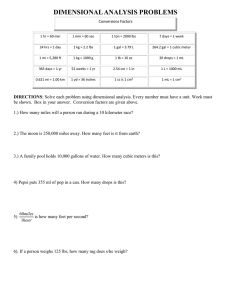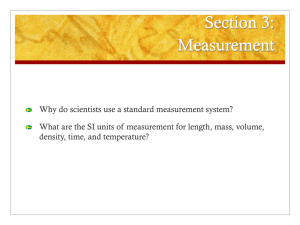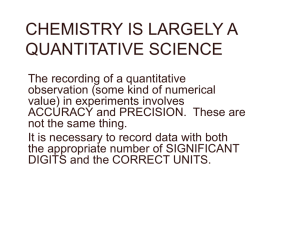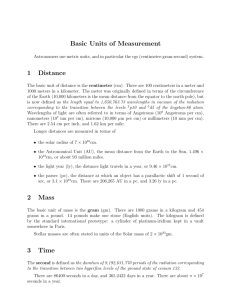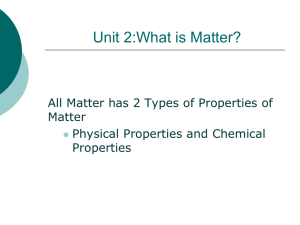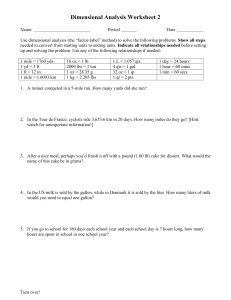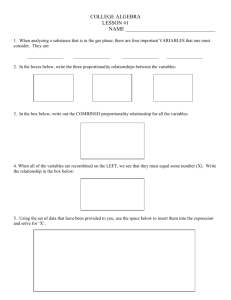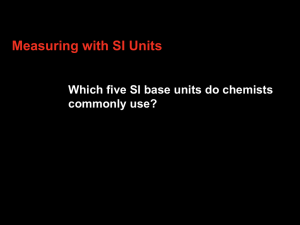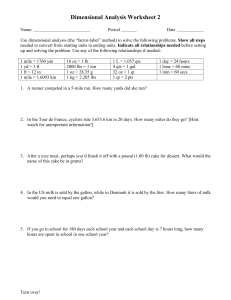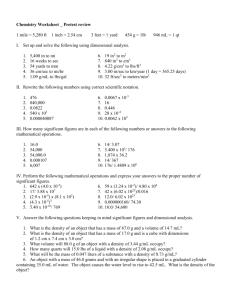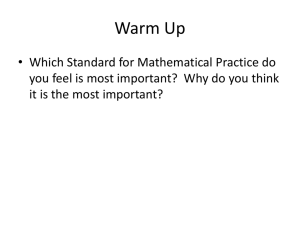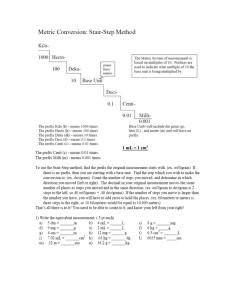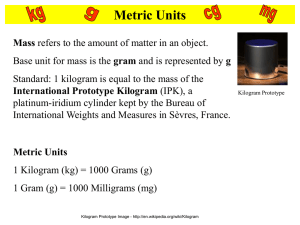Chemistry
advertisement
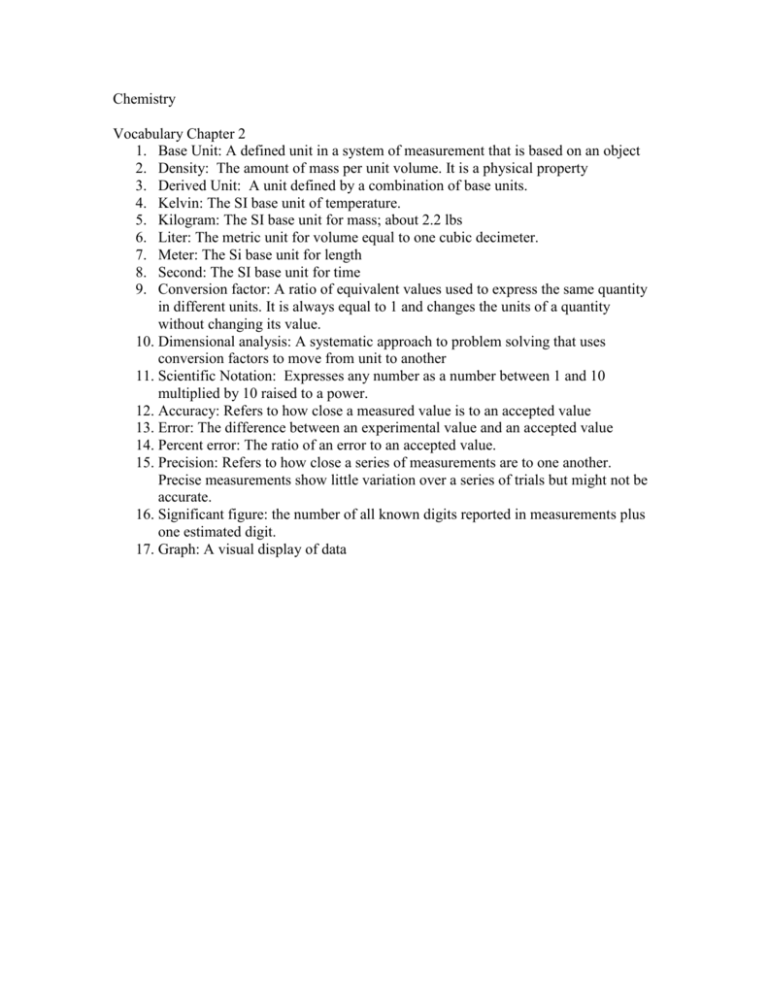
Chemistry Vocabulary Chapter 2 1. Base Unit: A defined unit in a system of measurement that is based on an object 2. Density: The amount of mass per unit volume. It is a physical property 3. Derived Unit: A unit defined by a combination of base units. 4. Kelvin: The SI base unit of temperature. 5. Kilogram: The SI base unit for mass; about 2.2 lbs 6. Liter: The metric unit for volume equal to one cubic decimeter. 7. Meter: The Si base unit for length 8. Second: The SI base unit for time 9. Conversion factor: A ratio of equivalent values used to express the same quantity in different units. It is always equal to 1 and changes the units of a quantity without changing its value. 10. Dimensional analysis: A systematic approach to problem solving that uses conversion factors to move from unit to another 11. Scientific Notation: Expresses any number as a number between 1 and 10 multiplied by 10 raised to a power. 12. Accuracy: Refers to how close a measured value is to an accepted value 13. Error: The difference between an experimental value and an accepted value 14. Percent error: The ratio of an error to an accepted value. 15. Precision: Refers to how close a series of measurements are to one another. Precise measurements show little variation over a series of trials but might not be accurate. 16. Significant figure: the number of all known digits reported in measurements plus one estimated digit. 17. Graph: A visual display of data
